How Do Microchips Work: Understanding the Core of Computing
18-12-2023 | By Robin Mitchell
The journey of microchip technology, from its inception with the first integrated circuit in 1958 by Jack Kilby and Robert Noyce, to the present day, is a testament to human ingenuity and technological advancement. The history of the microchip is marked by key developments like the first commercial microprocessor by Intel in 1971, setting the stage for the modern era of computing.
More than just a historical account, this article is a deep dive into the inner workings of microchips. We explore each step of their evolution, from miniaturisation to enhanced functionality, and how these advancements have shaped the capabilities of today's technology. Our focus is on unravelling the complexities of how microchips function, shedding light on the intricate processes that power these small yet mighty pillars of the digital world.
Table of Contents:
- Introduction
- Variability in Function: Design and Operation Influenced by Purpose
- Article's Aim: A Comprehensive Exploration of How Microchips Work
- Microchip Categories
- Transistor Types
- Logic Types
- Challenges when Using Microchips
- Package Options
- Industries & Applications
- Conclusion: The Indispensable Role of Microchips in Our Digital World
Variability in Function: Design and Operation Influenced by Purpose
The purpose of a microchip significantly dictates its design and operation. For instance, a microchip designed for computing tasks, such as those in smartphones and computers, is fundamentally different from one used in signal processing, like those found in audio equipment or radar systems. This variability stems from the specific requirements of each application – computing chips prioritise processing speed and data handling, while signal processing chips focus on accuracy and real-time response.
Understanding the microchip working principles helps in appreciating how their design is tailored to specific functions. This distinction in function leads to diverse architectures and design intricacies, highlighting the adaptability and versatility of microchip technology.
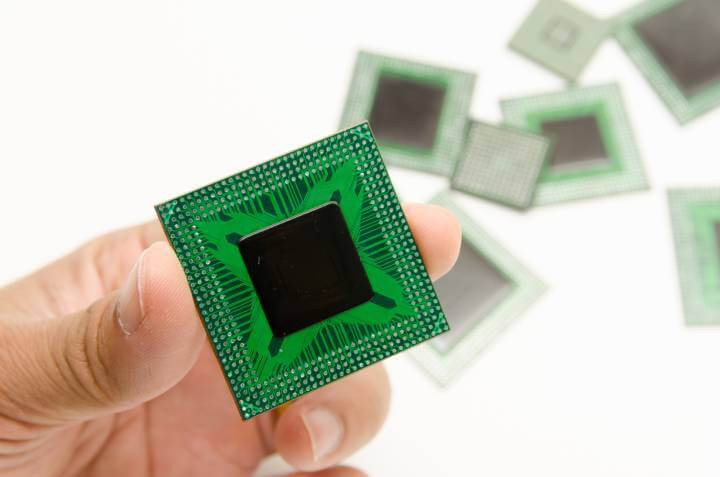
Article's Aim: A Comprehensive Exploration of How Microchips Work
This article aims to provide an in-depth exploration of microchips, delving into the various types, their working principles, and their wide-ranging applications across different industries. Our exploration is centred on demystifying microchip technology, explaining its intricate workings in a comprehensible manner. From the detailed mechanics of digital processors to the subtle intricacies of analog chips, we aim to unravel the layers of complexity and innovation that characterise these technological marvels.
For a deeper understanding of the components that make up these diverse microchips, explore our article on what computer chips are made of, where we uncover the materials and intricate processes that give them life.
Microchip Categories
Microchips, integral to modern electronics, come in diverse forms, each serving distinct functions. This variety is essential for the wide range of applications and devices we encounter daily. Let's delve into these categories, starting with Analog microchips, and explore their unique roles and complexities. Each category sheds light on the basics of microchip operations, revealing the diverse applications of this technology.
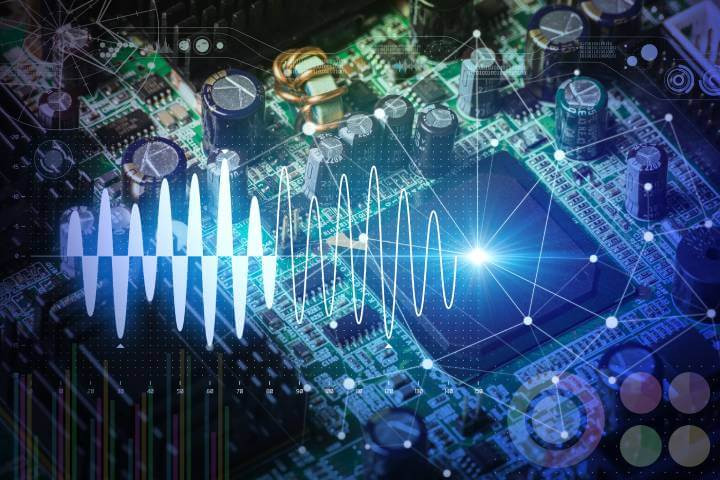
Analog Microchips
Analog microchips are adept at handling real-world signals, such as sound and temperature, which vary continuously. Unlike digital chips that process discrete binary data, analog chips deal with a spectrum of signal values, mirroring the nuances of the physical world. This capability makes them indispensable in applications where a direct representation of analog signals is crucial.
The complexity of analog microchips can range from basic components like amplifiers, which simply increase signal strength, to more sophisticated units involved in intricate signal processing. This spectrum includes operational amplifiers (op-amps) for precise signal amplification, comparators for signal comparison, filters for frequency selection, and oscillators for generating periodic signals.
The design and functionality of analog microchips provide insights into the versatile nature of microchip mechanics. A practical example of analog microchips in action is audio amplifiers found in sound systems. These chips amplify audio signals from a source, like a microphone or a music player, ensuring clear and loud sound output through speakers.
Digital Microchips
Digital microchips exemplify the mechanics behind microchips, operating on binary logic to perform complex tasks. Digital microchips operate on the principle of binary processing, the foundation of modern computing and digital communication. They interpret and manipulate data in binary form – zeros and ones – enabling complex calculations and logic operations essential in computers and digital devices.
The evolution of digital microchips spans from simple logic gates, which perform basic logical functions, to advanced processors that power computers and smartphones. This progression reflects the increasing demand for faster, more efficient, and more capable computing devices in our technology-driven world.
Digital microchips are ubiquitous in today's electronics, found in everything from kitchen appliances to sophisticated computing systems. Their ability to process and store large amounts of data efficiently makes them a cornerstone of modern electronic design.
Mixed Signal Microchips
Mixed-signal microchips bridge the gap between the analog and digital worlds. They are essential in modern electronics, where both analog and digital processing are often required. These chips can handle and convert between analog signals (like sound waves) and digital signals (like binary data), making them versatile and invaluable.
At the heart of mixed-signal microchips are two critical components: Analog-to-Digital Converters (ADCs) and Digital-to-Analog Converters (DACs). ADCs convert analog signals into digital form for processing, while DACs do the reverse, translating digital signals back into analog form. The operational process of mixed-signal microchips illustrates the fundamentals of microchip technology in bridging digital and analog signals.
Mixed-signal microchips are widely used in multimedia devices, where they process both audio (analog) and video (digital) signals. They are also crucial in the Internet of Things (IoT) devices, which often require the integration of sensors (analog input) with digital processing and communication capabilities.
To deepen your understanding of the journey from raw silicon to sophisticated integrated circuits, explore the details of how microchips are manufactured, revealing the fascinating process behind these technological marvels.
Transistor Types
Transistors are at the core of how microchips work, acting as the switch that dictates the flow of electrical signals. Transistors are the fundamental building blocks of all microchips, playing a pivotal role in the development of modern electronics. Acting as switches or amplifiers, they control the flow of electrical current in circuits, enabling the complex functionalities of various electronic devices. Let's delve into the specifics of different transistor types, starting with the Bipolar Junction Transistor (BJT).
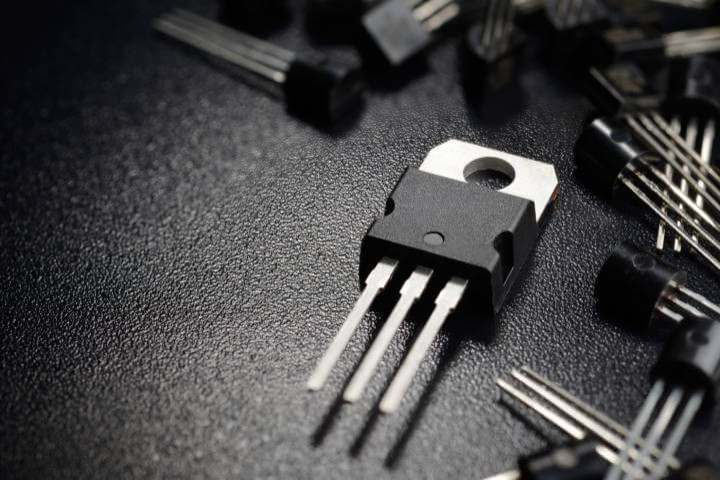
BJT (Bipolar Junction Transistor)
The BJT, invented in 1947 by John Bardeen, Walter Brattain, and William Shockley, marked a revolution in electronics. This invention laid the foundation for the development of modern electronics, replacing vacuum tubes with a smaller, more efficient, and reliable component. Over the years, BJTs have evolved, becoming integral in various electronic devices due to their versatility and efficiency.
BJTs operate on the principle of current amplification through semiconductor junctions. They consist of three layers of semiconductor material, each doped to create either a P-N-P or an N-P-N structure. The current flowing through one of the junctions (base-emitter) controls the larger current between the other two layers (collector-emitter), allowing for amplification or switching in circuits. The internal workings of BJTs are a classic example of microchip operational dynamics.
BJTs excel in applications requiring current control and amplification, such as in audio amplifiers, radio transmitters, and power regulation circuits. However, they have limitations, including susceptibility to thermal instability and slower operation speeds compared to other transistor types, which can be a drawback in high-speed or high-frequency applications.
FET (Field-Effect Transistor)
The Field-Effect Transistor, developed in the late 1950s, represented a significant advancement in transistor technology. FETs offered an alternative to BJTs, providing improvements in terms of power consumption and miniaturisation, which were crucial for the evolving demands of electronic circuits.
FETs operate as voltage-controlled devices, where the current flow is regulated by an electric field. Unlike BJTs, which are current-controlled, FETs use a voltage applied to the gate terminal to control the current flowing through the channel between the source and drain terminals. This characteristic allows for efficient control of the current with minimal power loss.
FETs are known for their high input impedance and low power consumption, making them highly efficient in circuit design. They are widely used in applications like analog switches, power amplifiers, and digital circuits, where power efficiency and space-saving are critical.
MOS (Metal-Oxide-Semiconductor)
The development of Metal-Oxide-Semiconductor (MOS) transistors in the early 1960s was a game-changer, significantly contributing to the miniaturisation of circuits. MOS technology enabled the creation of high-density integrated circuits (ICs), paving the way for the development of microprocessors and memory chips.
MOS transistors operate as digital switches or analog capacitors, depending on their application. They consist of a gate, source, and drain, with the gate insulated from the channel by a thin oxide layer. This structure allows for precise control over the current flow, making them ideal for use in both digital and analog circuits.
MOS transistors are crucial in high-density ICs, such as microprocessors and memory chips, found in computers, smartphones, and a wide array of digital devices. Their ability to operate at low power and high speeds, combined with their compact size, makes them indispensable in modern electronics.
An overview of conventional and new advancements in high kappa thin film deposition techniques in metal oxide semiconductor devices - Scientific Figure on ResearchGate.
Logic Types
The evolution of logic types in microchips has been driven by technological needs and limitations. As electronic devices have become more complex and demanding, the logic types used in microchips have adapted to meet these challenges, leading to a variety of logic families, each with unique characteristics and advantages.
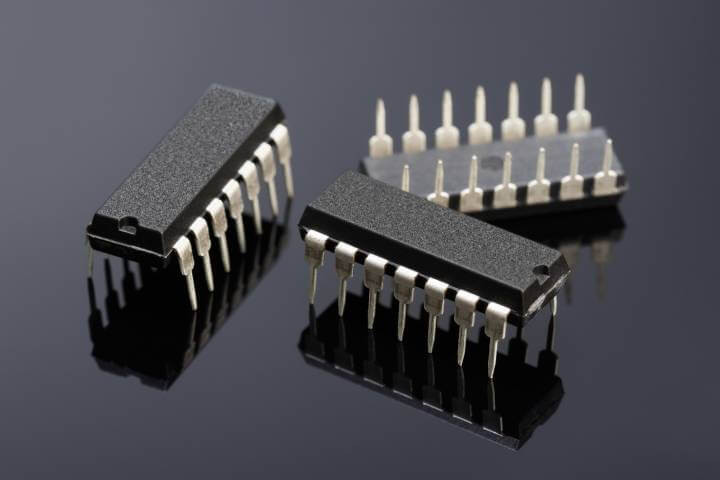
RTL & DTL
Resistor-Transistor Logic (RTL) and Diode-Transistor Logic (DTL) were among the early logic types used in computers. RTL, developed in the late 1950s, was one of the first logic families used in digital circuits. DTL, which emerged shortly after, offered improvements over RTL in terms of speed and noise immunity.
RTL operates by using resistors for input and a transistor as the switching element, while DTL uses diodes for input logic gating and a transistor for amplification. These methods were fundamental in early logic processing, enabling basic computing functions.
While largely obsolete in modern high-speed applications, RTL and DTL are still relevant in educational settings and simple logic applications due to their simplicity and ease of understanding.
TTL (Transistor-Transistor Logic)
Transistor-Transistor Logic, developed in the 1960s, marked a significant advancement from RTL and DTL. TTL became the standard in digital circuit design for decades, used extensively in early computers and evolving over time to suit more modern applications.
TTL gates function by using transistors as both the logic gate and the amplifying element. This design allows for faster operation and better noise immunity compared to its predecessors. TTL circuits use a bipolar junction transistor (BJT) at the output stage and multiple diodes at the input stage.
TTL is known for its reliability and speed, making it suitable for a wide range of applications, including digital computers, industrial controls, and consumer electronics. Despite being surpassed by CMOS technology in many areas, TTL is still used where its specific advantages are required.
NMOS & CMOS
NMOS (N-type Metal-Oxide-Semiconductor) and CMOS (Complementary Metal-Oxide-Semiconductor) represent significant advancements in logic technology. CMOS, developed after NMOS, brought about improvements in power consumption and heat generation, making it the preferred choice in modern electronics.
NMOS logic uses n-type MOSFETs and is known for its high speed but suffers from higher power consumption. CMOS, on the other hand, uses both p-type and n-type MOSFETs, significantly reducing power consumption, especially in static conditions, and allowing for greater density of logic gates on a chip.
CMOS is the dominant technology used in most of today’s digital circuits, including microprocessors, memories, and digital signal processors, due to its low power consumption and high noise immunity. NMOS, while less common now, paved the way for CMOS and is still used in certain high-speed, power-insensitive applications.
Challenges when using Microchips
While microchips are marvels of modern technology, their usage comes with a spectrum of challenges. These challenges range from power stability to environmental sensitivities, each playing a crucial role in the functionality and longevity of microchip-based systems. Let's explore these challenges in detail, starting with power and stability.
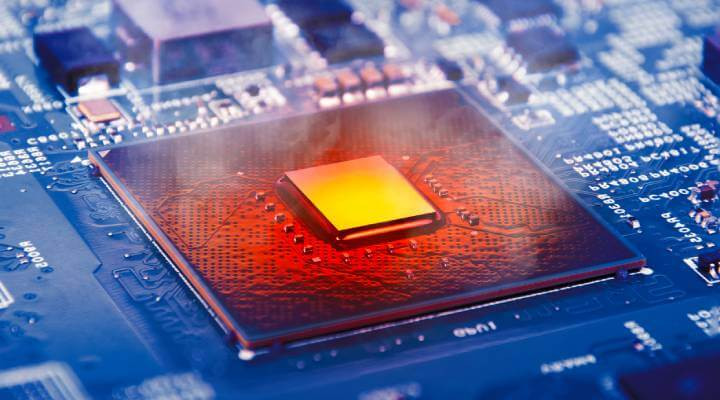
Power and Stability
A stable power supply is fundamental for the proper functionality of microchips. Fluctuations in power can lead to erratic behaviour, data corruption, or even permanent damage to the chip. Ensuring a consistent and clean power supply is therefore critical for the performance and reliability of microchip-based systems.
Power fluctuations can cause various issues in microchips, including operational instability, increased error rates, and in severe cases, physical damage to the chip's structure. Sudden spikes or drops in power can disrupt the delicate internal processes of a microchip, leading to malfunction or failure.
To combat power-related challenges, various strategies are employed in microchip design and system architecture. These include the use of voltage regulators to maintain a constant output voltage, power-on reset circuits to ensure proper initialisation, and decoupling capacitors to smooth out power supply variations. Additionally, designing circuits with low power consumption and tolerance to voltage variations also contributes to overall system stability.
Environmental Sensitivities
Microchips are sensitive to external factors like electromagnetic noise and static electricity. Noise can interfere with signal integrity, leading to errors in data processing, and static electricity, particularly in dry environments, can cause electrostatic discharge (ESD), potentially damaging the microchip. Shielding, grounding, and ESD protection circuits are commonly used to mitigate these risks.
Heat Management
Effective thermal management is crucial in microchip design and operation. As microchips process data, they generate heat, which can accumulate and lead to overheating. Excessive heat can impair chip performance, reduce lifespan, and in extreme cases, cause physical damage.
To manage heat, microchips are often designed with heat sinks, cooling fans, or integrated thermal pads. In high-performance chips, advanced cooling techniques like liquid cooling or thermoelectric cooling might be employed, but the layout of the circuit board and the choice of packaging materials also play a role in heat dissipation.
Integration Complexity
Integrating microchips with other components and systems presents its own set of challenges. Compatibility with other electronic components, signal integrity, and physical space constraints are key considerations, where designers must ensure that the microchip can communicate effectively with other parts of the system and that it fits within the physical design of the device.
Package Options
The packaging of a microchip is not just about encasing the silicon chip; it plays a pivotal role in the chip's performance and suitability for various applications. The right packaging ensures protection from physical and environmental damage, aids in heat dissipation, and facilitates electrical connections. It's a critical factor in determining a microchip's application scope, reliability, and overall functionality.
![]()
Packaging Diversity
Choosing the right packaging for a microchip is a decision based on several factors, including the intended application, size constraints, and heat dissipation requirements. The packaging must align with the operational demands of the device it will be used in, whether it's a compact consumer electronic gadget or a high-power industrial machine.
Through-Hole vs SMD
Through-Hole Technology (THT) and Surface-Mount Device (SMD) packaging represent two different approaches in microchip assembly. THT, where components are mounted on a PCB by inserting leads into holes, is often favoured for its ease of use in prototyping and for applications requiring strong physical connections. However, it's generally less efficient for mass production compared to SMD.
SMD, on the other hand, allows components to be mounted directly onto the surface of PCBs. This method is more efficient for mass production, offers greater density, and is better suited for modern, compact electronic devices. However, SMD can be more challenging for manual prototyping and rework.
SMD Variants
- SOIC (Small Outline Integrated Circuit): SOIC packages are widely used for integrated circuits. They offer a good balance between size and ease of handling, making them suitable for consumer electronics and automotive applications.
- TSSOP (Thin Shrink Small Outline Package): TSSOPs are smaller and thinner than SOICs, ideal for applications where space is at a premium. They are commonly used in portable devices like mobile phones.
- MLF (Micro Lead Frame): MLF packages, also known as QFN (Quad Flat No-leads), offer excellent thermal and electrical performance. They are used in applications requiring good heat dissipation and high-density mounting, such as high-performance computing and networking equipment.
- QFN (Quad Flat No-leads): QFN packages provide a compact footprint and good thermal management, making them suitable for high-frequency and RF applications.
- BGA (Ball Grid Array): BGAs offer superior performance in terms of electrical connections and heat dissipation. They are used in high-performance applications like CPUs and GPUs, where high pin count and efficient heat management are critical.
Industries & Applications
Microchips have become ubiquitous in modern society, finding applications across a vast array of industries. Their versatility and adaptability allow them to be tailored to meet the specific needs of different sectors, from consumer electronics to advanced aerospace systems. This widespread use underscores the transformative impact of microchip technology in various aspects of life and industry.
Sector-Specific Requirements
Each industry has unique requirements for microchips, influencing their design, functionality, and performance standards. These requirements are shaped by the specific challenges and demands of each sector.
Automotive
In the automotive industry, reliability and durability are paramount. Microchips used in vehicles must withstand extreme temperature variations, vibrations, and long-term wear and tear. They are integral in systems ranging from engine management to safety features like airbag deployment and advanced driver-assistance systems (ADAS).
Medical Devices
Precision and reliability are critical in medical devices. Microchips in this sector are used in a range of applications, from diagnostic equipment to implantable devices like pacemakers. They must meet stringent regulatory standards, ensuring accuracy and consistent performance for patient safety.
Aerospace and Defense
Aerospace and defence applications demand robustness and high performance under extreme conditions. Microchips in these sectors are designed to endure harsh environments, including high radiation levels, extreme temperatures, and significant mechanical stresses. They are crucial in navigation systems, communication equipment, and critical mission control systems.
Case Studies
Automotive: Durability in Action
In the automotive sector, microchips are used in engine control units (ECUs) to optimise fuel efficiency and reduce emissions. These chips must function reliably over the vehicle's lifetime, often in high-temperature and high-vibration environments.
Medical Devices: Precision for Patient Safety
In medical applications, microchips are used in blood glucose monitors, providing accurate and instant readings for diabetes management. The precision of these chips directly impacts patient care, necessitating rigorous testing and quality control.
Aerospace and Defense: Robustness in Extreme Conditions
In aerospace, microchips are employed in satellite communication systems. These chips must operate flawlessly in the vacuum of space, withstanding radiation and temperature extremes. Their robustness is critical for maintaining communication links and data transmission in space missions.
These case studies illustrate how microchips are ingeniously tailored to meet the specific needs of different industries, playing a crucial role in the advancement and efficiency of various sectors.
Conclusion: The Indispensable Role of Microchips in Our Digital World
As we conclude our exploration into the fascinating world of microchips, we have journeyed through the intricate layers of their design, operation, and application. Understanding 'How Do Microchips Work' has revealed a landscape of continuous innovation and technological marvels. These tiny components, though small in size, have an immense impact on our daily lives, driving the progress of various industries from automotive to aerospace. The evolution of microchips, from their basic transistor elements to sophisticated logic types and packaging options, highlights the relentless drive for advancement in technology. As we look towards the future, the potential of microchips seems limitless, promising even greater capabilities with advancements in nanotechnology, quantum computing, and AI. The story of microchips is not just about technological progress; it's a testament to human ingenuity, shaping the way we live, work, and connect in our ever-evolving digital world.
In closing, the story of microchips is one of human ingenuity and technological progress. It's a testament to how something so small can have an immense impact on our lives, shaping the way we live, work, and connect. As we continue to innovate and evolve, the humble microchip will undoubtedly remain at the forefront of our digital journey, driving us towards an ever more connected and intelligent future.

